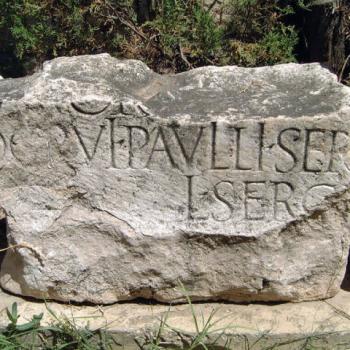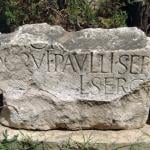Many of you will be familiar with the now famous ‘cave canem’ (beware of the dog) mosaic found at the house of the Poet at Pompeii. Wealthy persons in the Greco-Roman world often had pet dogs, and we now have a new grave stele inscription to show just how beloved such animals were in antiquity amongst the socially elite. The inscription can be found in New Docs Vol. 10 (pp. 126-35) and reading “…after playing games with Stephanos, they were crying for him, having suddenly wasted away to death; he lies here. This is the grave of the perished dog Stephanos. Aurelia Rodope wept for this (dog) and buried him as a man. ‘I am Stephanos (the) dog, and Rodope built my grave.'” The woman’s own sarcophagus is set up very nearby to this limestone sarcophagus.
Just how popular domestic and domesticated dogs were in antiquity is shown not merely by such inscriptions but for example, as Harrison points out, by Theophrastus’ Characters 93 that the man of ‘petty pride’ had a lap dog that he vowed to inter properly in a sarcophagus. Aesop talks about dogs being taken on sea trips with apes! Some owners even took dogs to the gymnasium with them. The literary tradition regularly mentions the great loyalty of dogs to their owners (Plutarch Them. 10.6; Pliny the elder HN 8.61 etc. see Harrison’s article p. 127). Dogs are even depicted as reclining at table or next to the table with their owners (and see Homer Od. 10.216. In fact Harrison points out that we regularly find on Greek vases a picture of dogs under the master’s table awaiting food (ND Vol. 10 p. 129).
Harrison enters into the lists of the discussion about the Syrophoenican woman’s encounter with Jesus where dogs are discussed. The setting bear in mind however is not a Jewish one, and the woman’s reply may reflect customs in Tyre where dogs could gather scraps under the table and were viewed positively (see Harrison pp. 130-34).












